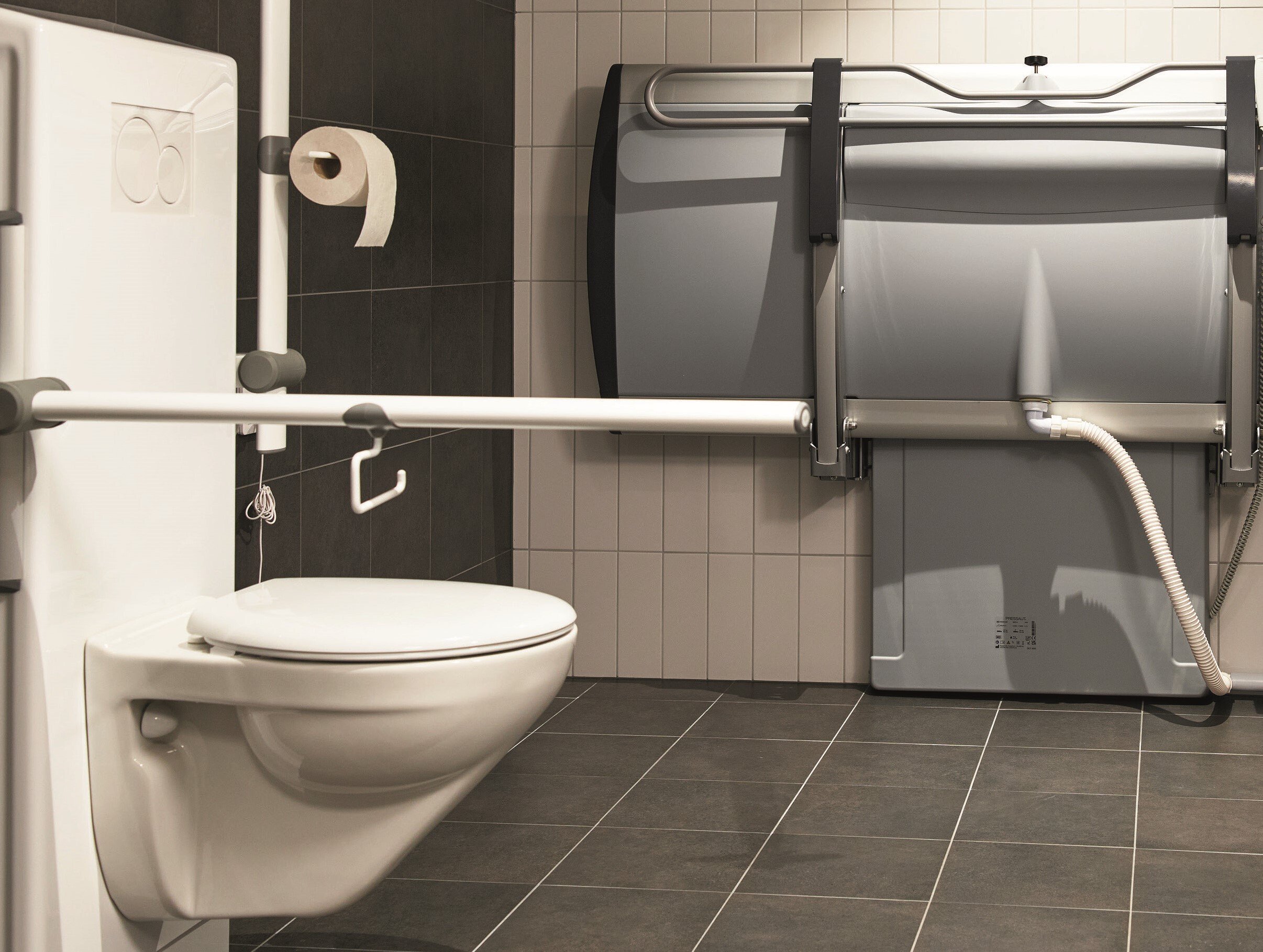Accessible restrooms are a fundamental aspect of inclusive workplace design. They ensure that all employees can use the facilities independently and comfortably. The key features that make restrooms truly accessible and inclusive include an automatic door opener, adjustable equipment, and lowered mirrors, to name a few. Below, we’ll walk you through these features and why they are important for accessibility.
Automatic Door Opener
One of the most crucial features of an accessible restroom is an automatic door opener. This allows individuals to open and close the door independently, without needing assistance. Automatic door openers enhance privacy and convenience, making the restroom experience smoother for everyone.
Adjustable Equipment
Restrooms should be equipped with adjustable toilet seats and sinks that can be raised or lowered. This flexibility accommodates the diverse needs of users, ensuring that everyone can use the facilities comfortably. Adjustable equipment is particularly beneficial for individuals with varying mobility levels.
Personal Lift
Installing a personal lift, either mounted on the walls or the ceiling, or opting for a portable lift, can significantly enhance accessibility. A lift provides essential support for individuals who need assistance transferring from their wheelchair to the toilet. While a portable lift requires more space, it offers greater flexibility in usage. These kinds of adjustments can add greater efficiency for employees, such as Martin Larsen, now a Marketing Content Specialist at Permobil.

“At my previous job, I couldn’t use the restroom, so I had to rely on a urine bottle or make the 40-minute commute home each way. In contrast, my current workplace is fully accommodating, with challenges solved collaboratively by my employer and the municipality,” Larsen said.
Showering Bed
For restrooms that include shower facilities, a shower bed is a helpful addition. This setup allows caregivers to use both hands while the water continues to flow, keeping the user warm. Ensuring that a shower handle can be mounted above the bed makes showering more convenient and comfortable for everyone in the workplace.
Mirror Height
Mirrors should be placed at a height suitable for individuals who are seated. This ensures that everyone can use the mirror comfortably, whether they are standing or sitting in a wheelchair. Properly positioned mirrors allow anyone, regardless of ability, to take advantage of the restroom amenities.
Detail-Oriented Design
Attention to small details can make a significant difference in the accessibility of restrooms. For example, installing shelves for placing personal equipment while showering or using the toilet, and ensuring towel hooks are at various heights, including both lower and standard levels, can greatly enhance usability.
Creating an inclusive and accessible workplace is essential for fostering a supportive environment where all employees can thrive. The Workplace Accessibility Guide provides comprehensive recommendations and practical tips to help organizations design spaces that accommodate the diverse needs of their workforce. From parking areas to conference rooms, the guide covers various aspects of workplace accessibility, ensuring that every individual feels valued and empowered. These enhancements not only improve the daily experience for individuals of all abilities.

